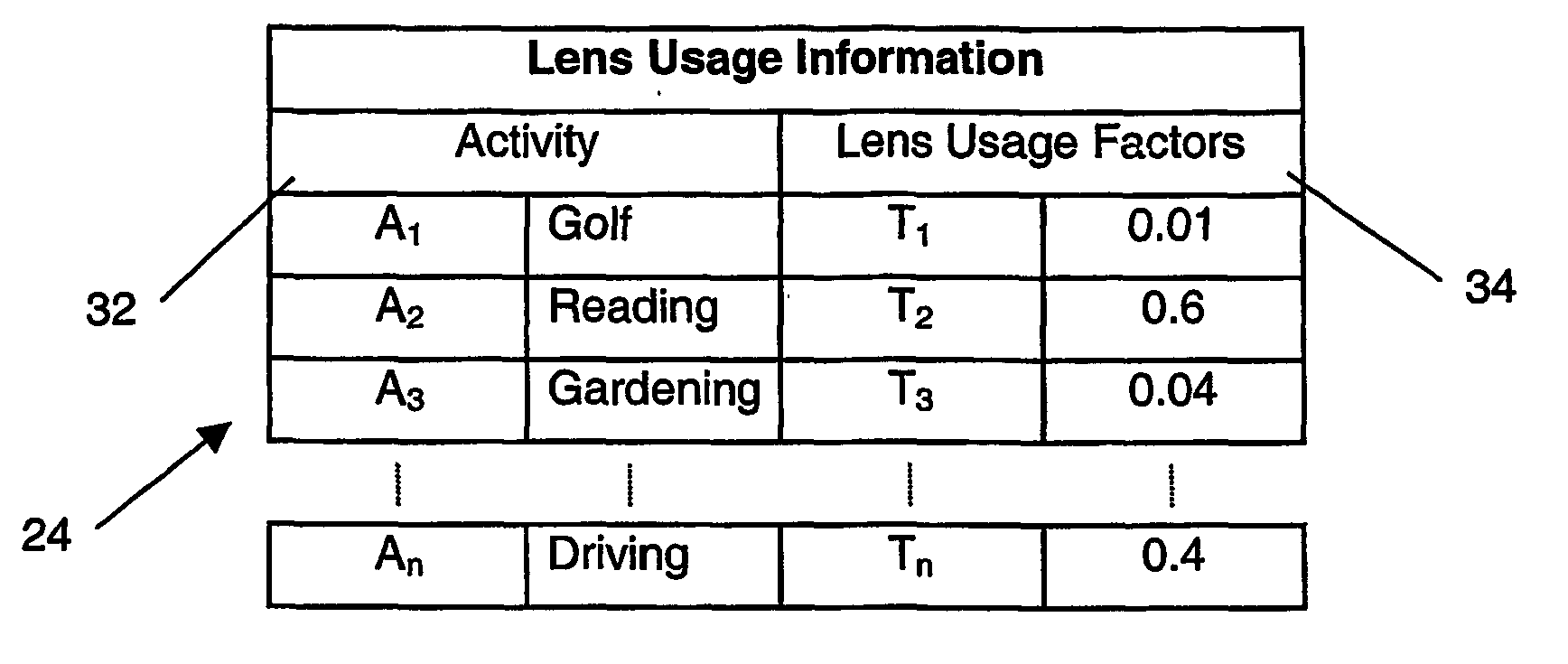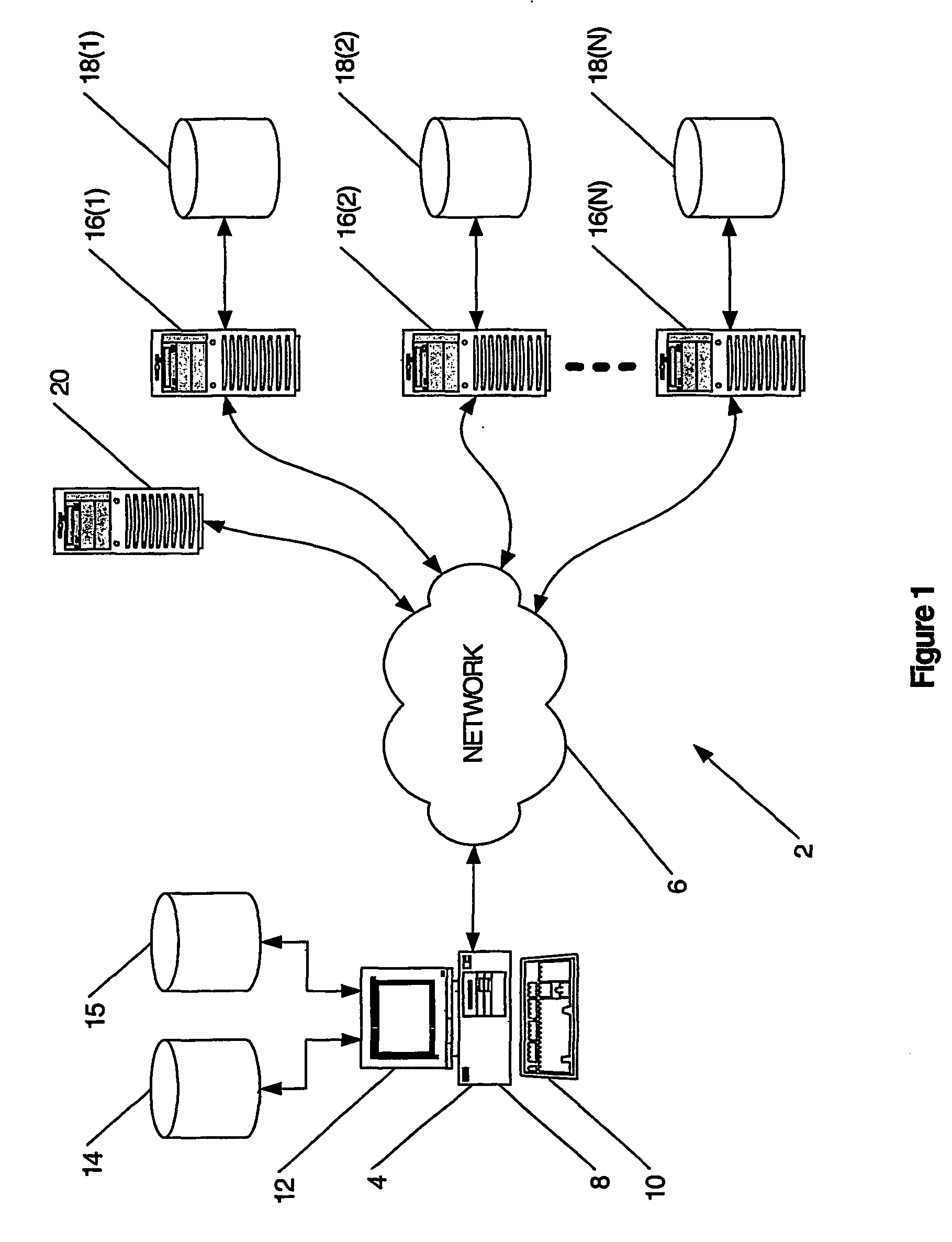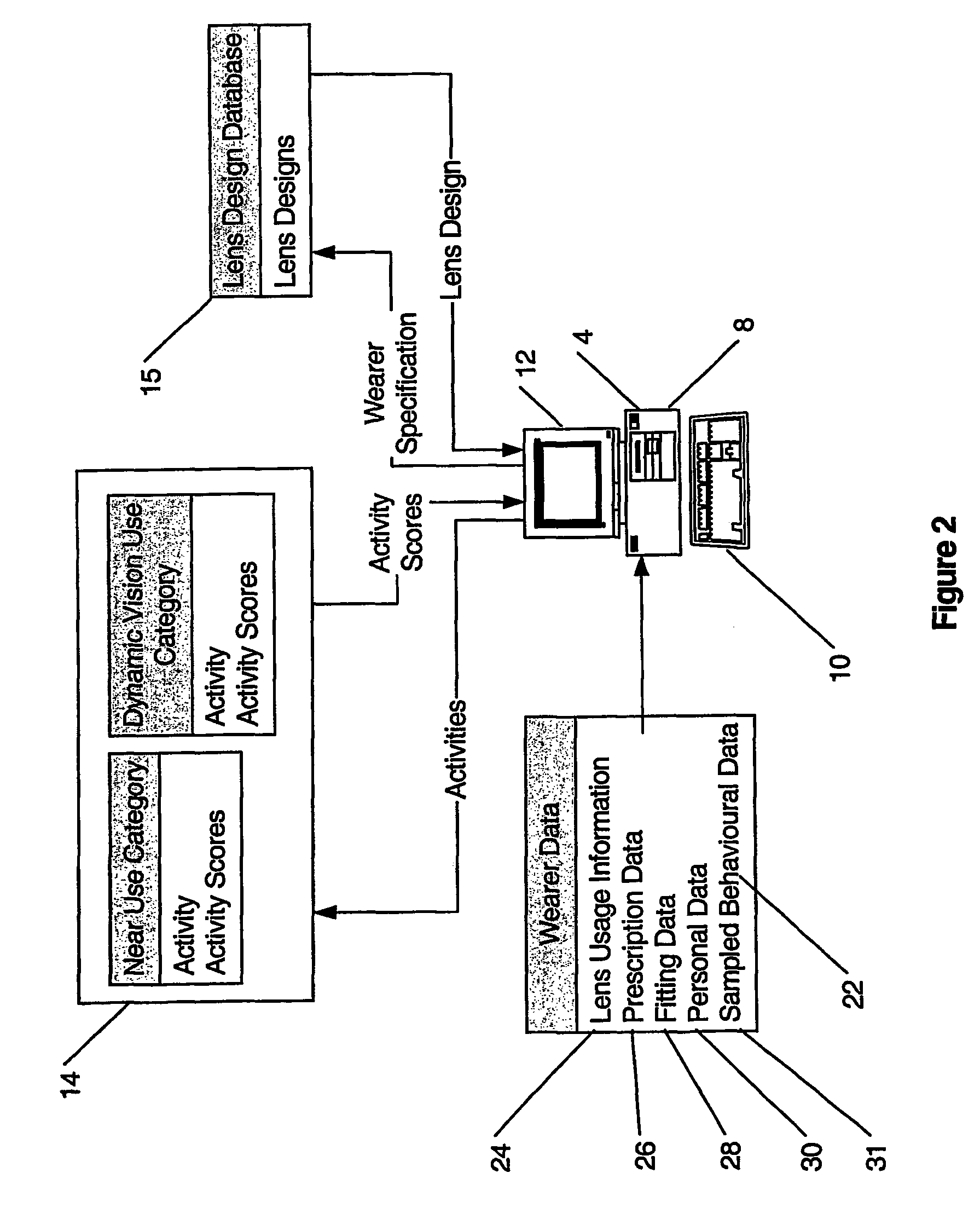Prescribing and/or dispensing ophthalmic lenses
a technology for ophthalmic lenses and process, applied in the field of system and process for prescribing and/or dispensing ophthalmic lenses, can solve the problems of unsuitable lenses for individual needs of wearers, difficult dispensing process, and limited approach, so as to reduce sagittal addition power, reduce chromic aberration, and improve the effect of ocular ocular ocular ocular ocular ocular ocular ocular ocular
- Summary
- Abstract
- Description
- Claims
- Application Information
AI Technical Summary
Benefits of technology
Problems solved by technology
Method used
Image
Examples
example 1
Entering an Activity Score for the Near Vision Use Category
[0180] 1. Enter the name of the activity descriptor into the database (for example, ‘golf’); [0181] 2. Enter the working distance of a number (for example, three) visual tasks the activity requires and apportion a percentage (P) of time spent performing each task (for example, visual task 1: viewing the ball in the vicinity of the feet (10%), visual task 2: reading score card (5%), visual task 3: viewing down the fairway (85%)); [0182] 3. Assign weights (W) for the working distances (for example 0 cm to 49 cm=10 (for example, reading score card), 50 cm to 64 cm=9, 65 cm to 75 cm=8, 76 cm to 90 cm=7, 91 cm to 105 cm=6, 106 cm to 125 cm=5, 126 cm to 200 cm=4 (for example, viewing the ball in the vicinity of the feet), 201 cm to 300 cm=3, 301 cm to 400 cm=2, +401 cm=1 (for example, viewing down the fairway)); [0183] 4. Multiply each weight (W) by the proportion of time (P) to obtain the activity score (S) as follows:
S=W1.P1+W...
example 2
Entering an Activity Score for the Dynamic Vision Use Category
[0189] 1. Enter the name of the activity descriptor into the database (for example, ‘golf’); [0190] 2. Enter the proportion of a number (for example, two) of visual sub-tasks the activity requires and categorise each sub-task according to the following criteria together with a score as follows: [0191] Subject posture: sitting / stationary=1, walking=5, running=10.
[0192] Subject motion: stationary=1, moving at walking pace=5, moving at running pace=7, moving faster than running pace=10; [0193] Head Turn: required=5.visual target motion; and not required=1.visual target motion. [0194] 3. Calculate an activity score (S) as the sum of the scores for all the categories or if more than one sub-task is entered, as the proportional sum of the n tasks. [0195] 4. Store the resultant dynamic vision use category activity score (S) in the activity database.
[0196] Having retrieved the activity scores from the activity database, the pr...
PUM
 Login to View More
Login to View More Abstract
Description
Claims
Application Information
 Login to View More
Login to View More - R&D
- Intellectual Property
- Life Sciences
- Materials
- Tech Scout
- Unparalleled Data Quality
- Higher Quality Content
- 60% Fewer Hallucinations
Browse by: Latest US Patents, China's latest patents, Technical Efficacy Thesaurus, Application Domain, Technology Topic, Popular Technical Reports.
© 2025 PatSnap. All rights reserved.Legal|Privacy policy|Modern Slavery Act Transparency Statement|Sitemap|About US| Contact US: help@patsnap.com



